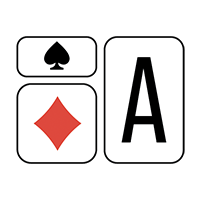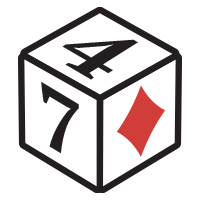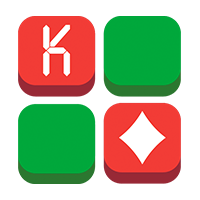All right, so it's time to go blind versus blind. This is the timeline for today. The spot is very easy: we open raise small blind first in, and the villain calls big blind.
Most examples, or all the examples, are from the small blind's perspective, but you can treat that vice versa as well. You can say the villain is open-raising small blind, and we call in the big blind; that works the same way.

I just showed you random examples depending on the rake. I filtered for a non-limping strategy with a certain rake; it's like a standard opening range on the left and a standard calling range on the right. Just seeing that we have very, very wide ranges for tournament players is even more interesting and important because ranges get wider. If we include limping, we get even wider ranges: lots of limping, lots of checking back, very, very wide ranges.
Then we can jump into the next thing and quickly recap my strategy that I used there—my simplifications. I kept the ranges here for the overview. The problem we are facing is that the small blind range here is 578 combos, while the big blind range is 490 combos. You don't need to know those numbers; you just need to know it's a lot. Navigating those and arguing, "I have more sets," "I have more this," "I have more two pairs," "I am stronger," whatever—talking about six combos, ten combos, twenty combos won't help you a lot to really understand that spot; it's just too big.
So we need to simplify that. We really need to understand those spots in depth. The way I do that, and the way I presented it in the poker code lessons, is always through simplification and through cornerstones. The first thing I did write down here is that I split things up on the flop into a range bet, range check, and tradeoff boards. It's like boards where we bet everything or our entire range; some spots where we should check everything; and then in-between boards—a way of thinking about those which helps us break down the continuations.
Next was kind of talking about double barrels. Then we talked about how we play after a check and facing a bet in late game—really cutting things down—which is something I can't do today; it's way too much for that. You should definitely sign up and see all the videos; there are plenty of hours of work to be done: lots of small examples, big examples, big sessions, lots of theory.

So yeah, blind versus blind is just a very, very big spot. That's it—the whole key if you really want to understand things in depth means you need to break things down and make them simple for your brain to have a strategy and your cornerstones. I always want to have those so that I know exactly which parts of which hand class I am playing which way.
This is a message to you guys: everyone who wants to improve—the materials out there, the explanations in depth—you just have to sign up and check those out.
The next step is the truth about population, and I'll just show you two things that every database shows this year: the player pool overfolded massively in wide range spots. I'm not talking just about the flop; I'm not talking just about the turn; I'm not talking just about the river—it's the combination of everything. Usually, people overfold to triple barrels, double barrels, single barrels, delayed bets, and double delayed bets—all of those usually get overfolds on average from the average player. Obviously, there are some Brazilians out there who do not overfold.
The second thing is that the player pool is not aggressive enough in wide range spots. This is why it's not a tendency; this is why I'm presenting something like that; and this is why it's just very natural. It's tough to navigate when you have nothing; it's very natural to throw away your hand when you have nothing—whatever "nothing" might mean in this context. When you have King high sometimes it's an okay hand; when you have just an Ace high or when you have a bottom pair with three overcards—it's another thing: not aggressive enough—not understanding relative hand strength—that actually you have lots of value hands compared to villain maybe, and you need to add lots of bluffs – who has the advantage in those spots?
So we end up with people not bluffing enough in the first place, which means we see cards cheaper than we should—that's the first thing.
The second thing is that if they check, they are weaker than they should be because, well, if they are not betting their bluffs or their air, it needs to be somewhere. Now, I’ve already talked a little about what it means to break it down, and I’m definitely missing things. Over-realizing equity is one aspect; just imagine you bet something on a queen-high board with your King-five suited. If you know the villain is raising less often than he should, it means you see the turn more often than you should. You will hit a King sometimes, which will give you expected value (EV). This is just immediate profit because of that over-realization. You don’t need to throw your hand away.
The same principle applies when you check a board with nothing; you see a turn card and now might have something with a hand that would have check-folded instead. So, just over-realizing equity because people are too passive in general.
The second thing is that you gain immediate EV when bluffing. Take this very simple spot: we check the flop, the villain checks back; we check the turn, and the villain checks back again. We bet small on the river. There’s no way villains are not overfolding as a general tendency, and we can have any hand here. This is just a spot where they didn’t bluff the flop enough; they sit on the turn and didn’t bluff the turn either. Now they still sit on the river, and when we bet, they fold. It’s just that dynamic: air versus air is kind of the first bad hand that wins very often, and that concept works street by street. I used this very easy example because there is no further gameplay.
Another point is that being more aggressive allows you to deny equity effectively. A better example might be if we are in the big blind: if the villain checks to you on a 7-6-3 board, you don’t give them a free card; you bet most of your Jack-Ten hands and the villain folds his Queen-Ten. So, it’s just about making sure something folds.


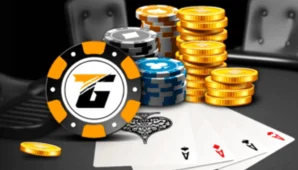
Exploits
I call this the plan of small punches. We want to hammer on that weak part of their range to make it very clear. I want to give the villain the maximum amount of chances to play incorrectly. Knowing that they play incorrectly by overfolding and by not raising—especially when we know how to get in there—what do we need to do? We need to bet so they have a chance to overfold and we benefit from them not raising. If we check, we benefit from them not betting enough, and we can punish them in the late game as well—but we need to put out those bets when the right moment comes.
The second thing is that small bets are key when ranges are still wide. If we are talking about triple barrels and everything gets heavier, we want to represent strength now; this is what I call a knockout fight. This is not what we want to go for because villains have tighter ranges now as well.
Strategy Tree:

This pretty much encapsulates the whole message for today’s session: small punches and giving examples for that little game tree—the flop game plan of blind versus blind—to see all the options we have. Let me explain it quickly: we started as the small blind; let’s say small blind is zero. What can we do? We can check; then big blind turns over and checks back, leading us to an opportunity—this is how I want to see it—an option where the villain is now very likely or more prone to folding than he should be, which means we have the small blind's option of a delayed bet—a beautiful option.
What could happen as well? We check, and if big blind decides to bet, well, if he folds, it’s over; but if we call, there are some turns where we can donk bet and some turns where we should donk bet. We could obviously check-raise, but this becomes a little tougher now; this isn’t really a wide range anymore after the villain called a check-raise on the flop—he did bet himself and called a check-raise—which usually indicates a stronger hand in those spots.
Then we see a turn; this isn’t really our spot anymore but obviously remains an option as well. What else could we do? We could start by betting—and this here is too small; this is already a simplified game tree. Obviously, we can have multiple bet sizes but let’s consider betting first: if villain folds, then we already know they are overfolding so we make money right away by betting.
If they call us, it means they are weak—they did not raise—which gives us great information. If they call but did not raise, then depending on the turn card and our hand, we can decide whether to double barrel with small sizes, big sizes, crazy sizes or other options—or they may raise us in which case we primarily should consider overfolding and going for that delayed bet strategy instead.
The donk bet executed in the right way is an excellent punch as well. The double barrel, specifically the small double barrel, fits our strategy of small punches too. It’s not only that I talk you into bluffing a lot; I feel like once we have the knowledge, we can also go very thinly for value. That’s very good, as it makes use of villain tendencies and shows their hand in a way.
Let's move on to examples!
That’s it, actually. Now we’ll look at two examples: four cards for the delayed bet with on the turn—not an ace, as that would make things too simple. The board is another , and it goes check-check.
In this spot, we can block bet ace-high as much as we want; we can block bet a lot, and the villain sits there with lots of hands.

First, our block betting strategy and villains' reactions: why is that so effective? Because they have hands that they are forced to fold too often. You see, they sometimes need to call with hands like here, but that’s not happening—they fold .

So one reason is they have those folding hands too often because they did not bluff the flop. Secondly, they overfold those hands too often. I don’t think that at most stakes—even the highest stakes—people call with their offsuit here; they fold it.
This leads to two reasons for that natural leak and they miss their bluff raises. They not only have hands like but fold them every time instead of ever raising against a block bet on this board. You need to bluff with absolute air; there’s no equity bluff—no draw, no nothing. You need to go with an absolute insane airball to bluff here; bluffing with is kind of advanced for them.
So they are not raising enough with a wide range versus the right range, and all the hands you have feel this is where people overfold the most. I expect more than 45% folds here.
Okay, let’s go to the next one.
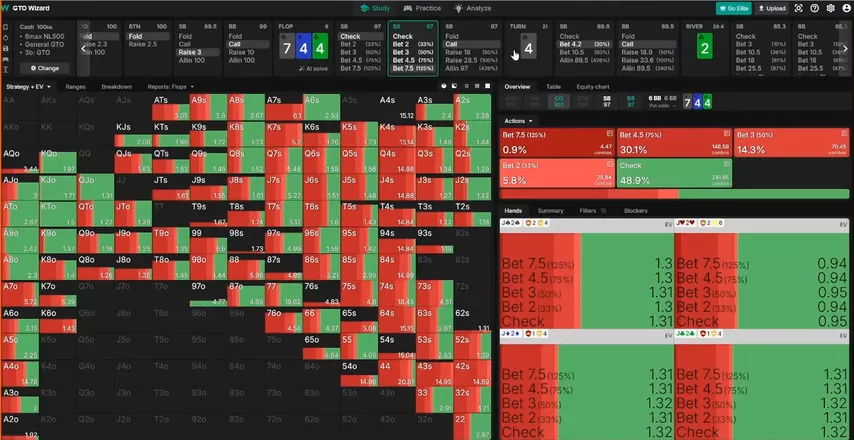
We check-call the flop and want to donk the turn. This is a beautiful example: on a board, it can obviously be any dry board that turns into trips or any paired board that turns into trips. The villain should start betting big a lot because he has the trip advantage and holds many trips plus straight draws. This is why I chose something with straight draws; straight draws should bet all the hands—not much trapping going on here—adding all the straight draws like suited and so on.

It’s not an overbet but a big bet—lots of pressure—and then just the turn card says, "Sir, you represented a hell of a lot of ." We cut that in half; actually, you don’t have that hand and you’re bluffing. On top of that, we decrease the value of all your straight draws because hitting a straight on this board doesn’t help you at all. This is what we see now: we can sit here with an Ace-high hand and fold out the equity that villain has with something like —freaking ten outs against our Ace-high—so this is beautiful usage of villain's bluffs.
He can’t do anything; that’s a 20% bet and he needs to fold. Let’s see if he folds 31% while already calling any Jack or raising . So I bet more like 50%, expecting him to fold.

Now let’s get to the next spot: putting it into a check-raise on the flop.
I go for it because there are some boards where people are stabbing; it’s fine to stab but then really tough to defend. It’s one of my favorite boards: rainbow—the one where villain has nothing and we have it all right now—no offsuit two pairs for villain which just makes our overpairs nuts.

That’s the reason why this is the board where we want to get the maximum amount of money in the middle now. Villain has some pocket nines which he three-bets; he has pocket fives and deuces—that's it—and then he has suited combinations of two pairs. So we can stack off pocket tens here, which means we can try to get maximum money in before there’s lots of connectivity going on.
Here we can look at T-Jack, Queens, Kings—our main interests—I would say maybe some Ace-nine mixing it up wants to get a big pot and tries to achieve that by betting big or by check-raising Ace-Queen-nine which is awesome as well. But here I clearly prefer big bets compared to check raises because villain's stabbing frequency should be way lower here.It’s very natural for people to be betting sometimes because they have or —they want to protect—and plus they have straight connectivity for them; it seems like they have something but they are not backing that up with nuts really.
So checking here, villain bets—we’ll go with half pot or something—half pot or even a little higher; let’s say half pot as our highest frequency—and then we see something beautiful unfold from there.

Not in this one. I had another simulation that shows the 150% check-raise sizing because it clearly demonstrated going for the maximum amount of money in the middle right now.
So, let’s take this scenario: the check raises with overcards plus a backdoor draw. Now you can guess the best turn card—let’s say it’s a . This is something where we can do lots of damage; everything improves to either a straight draw or a top pair, and still, our is good enough to stack off.
On the river, we can put another out there. All our straight draws miss, but that shouldn’t matter too much; a rainbow board makes it better since villain has nothing to navigate.

If villain follows up with a backdoor flush draw on the flop and then misses on the turn, he has the maximum amount of nothing. Jamming 55% on that river is just not enough.
But if we do something crazy like this, then see you later, big blind—and off we go! Now even on a , we can block bet our for value.
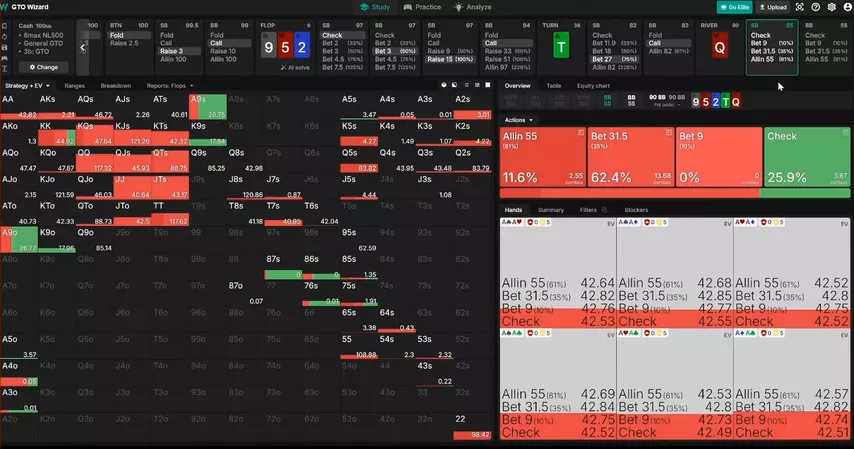
Now, regarding the other scenario, I think it was just better to check-call; we’re not folding Ace-Nine anywhere. The question always arises when it comes to check-raising: we need villain to bet first. So I’m showing that again—we need villain to bet the hands that he can then fold. It’s good for us if he bets Jack-Ten because this is something he will fold. If he bets his bluff, that’s good if it’s there; we check-raise our and he’s out of there.
It’s not good for us if villain checks all that back, and we’ve figured out that villains are on average not betting often enough. So maybe it’s better for us to be on the big blind end if it’s indifferent against the solver. But here I find reasons because people have lots of gut shots and backdoor draws, which gives them a reason to feel connected to the board. Then after the check-raise, they realize they have nothing.
Let’s get to the last example: the double barrel with King-Jack on a King-Seven-Two board, and then a Jack comes on the turn—a better card for us than a four for sure. We have more options now; we see a 16% chance of hitting our outs. Okay, we give ourselves an advantage with a Jack—it’s a good card for us. Lots of hands might want to buy another card or go for thin value; even Jack-Ten can be bet he

What are we folding out? Is it a success if villain folds Ace-X? That’s a big success even for our King-X hands; we want to play like that with our Jack-X hands. Villain might be folding something like Queen-Eight suited or Queen-Six suited—big success for our Jack-X.

What I like even more is this scenario where there’s no flush draw; I just want to turn over the flop and see the Jack of clubs. This time around, I’m not sure whether it shows more percentage now—probably about the same—but this is where I implemented a little more myself because it clearly indicates a good card for me. It leads to more big betting opportunities overall, and I can split things in a way I like.

Okay, let me show one last thing that will be part of the key takeaways: my favorite board again—let's say villain checks on 9-5-2. What do you think I want you to do when you have 10-8 offsuit? The first right answer is bet! This is the thing: if hands are indifferent, it means that in the solver world both have the same expected value (EV).
Now we figure out two things: people are overfolding as aggressors, and we know their checking ranges are weaker because they tend to bet when they have something stronger. What else do we know? We know for sure they might be folding, but even if they call, we know they are not check-raising 13%. Do they call with their King-T offsuit? Likely not! That is enough together with the future game tree; we just over-realize that they are not check-raising Ace-Nine or King-N with those frequencies.
So we realize the equity hitting at ten—if it's indifferent—and what I wrote down today is true: in the real world, betting is bette
Conclusions
So just really understanding it like that: indifference in the solver does not mean indifference in the real world. Usually, now that we have the knowledge of how people play in a natural way, we know which approach is slightly better.
Okay, that gets us to the last slide: key takeaways. We figured out why today, and I’ll write it down again. The small punches can create a lot of expected value (EV). I started with the last sentence here: stay away from big fights. I don’t want you to go for triple barrels or overbetting all-in crazily; this is not what I aimed to teach today.
It’s about understanding big ranges and ensuring that villains are overfolding their parts. People are not bad at playing strong hands; they may be bad in other ways as well. This is what I tried to explain once more: whenever a hand is indifferent in the solver world, you should likely take the more aggressive route when you benefit from villains folding.
All right, thanks to everyone who was here! I would love for everyone who signs up for Poker Code and isn’t there already—also those with a free account—to make use of that. For everyone I can welcome to the team at some point, I’d definitely be happy to welcome you in the Discord.
See you soon, guys! Have a great day!





